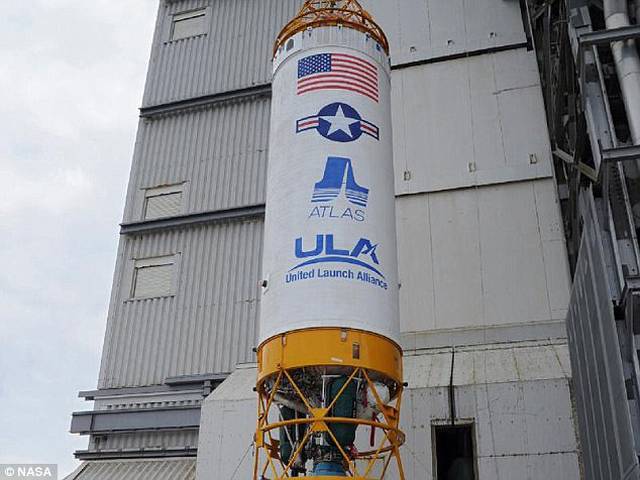CALIFORNIA-A 50-year-old plan to recycle old rockets in orbit by turning them into manned space stations is being revived by Nasa.
The agency has signed $10 million (£7.8 million) contract to investigate turning used rocket tanks into space labs with support for a functioning crew.
The idea was first conceived in the 1960‘s by German aerospace engineer Wernher von Braun, who proposed it was the cheapest way to build a space station.
Mr von Braun, who died in 1977 aged 60, was an ex-Nazi ballistic missile engineer credited with inventing the V-2 rocket. Now Nasa is reviving his plan to use two rockets, one crewed and one un-crewed, to build a space station from recycled parts.
The un-crewed rocket will carry a satellite or resupply cargo, while the manned rocket - which will launch a day later - will carry the recycle crew and equipment.
Once both are in orbit, the astronauts in the crewed craft will remotely vent any leftover fuel from the un-manned rocket’s large hydrogen tank.
They will then build and install life-equipment and move into the empty space, reusing a fuel tank that would otherwise have been left to float in orbit or directed into Earth’s atmosphere for destruction.
‘This innovative approach offers a pathway that is more affordable and involves less risk than fabricating modules on the ground and subsequently launching them into orbit,’ Jeff Manber, founder and CEO of NanoRacks, one of three private US firms involved in the Nasa contract, wrote in a blog post.
‘Our commitment is to bring about cost-efficient, commercial space stations via re-purposing in-space hardware, and we can’t wait to bring you along for the ride into the future.’
Three private companies have been contracted to test whether the recycled rocket programme is feasible.
Nanoracks, a space commercial service company, will make the parts needed for a lab and living space.
This laboratory will be bolstered with robotic outfitting from Space Systems Loral, a company that designs and builds satellite and spacecraft systems.
United Launch Alliance, which has sold rockets and other launch services to Nasa and the US government for more than a decade, will provide the used second stages of Atlas V rockets.
The upper stage of these rockets are currently discarded after only one use, so converting them into small space stations could save the considerable costs of building new orbiting labs from scratch.
The recycled rocket programme was originally put forward by German aerospace engineer Wernher von Braun.
Mr von Braun remains a controversial figure - he worked with the Nazis on ballistic missiles during World War 2 before surrendering and and taking his rocket-building team and talents to the United States.
Eventually, he became a leader in the American space program, building the Saturn V rocket that carried Apollo 11 to the moon.
Before the United Sates’ first ever satellite - Nasa’s Skylab - was launched in 1970, Mr von Braun proposed that the cheapest way to get the station beyond Earth’s atmosphere was to send it in separate parts.
He proposed that Nasa separately send parts for a space station and its crew aboard two Saturn IB rockets, which would launch a day apart from another.
Once both rockets were in orbit, he offered that the astronauts could build the station that they were to inhabit using a spent rocket fuel tank.
Launching a station as two payloads would considerably save on rocket fuel and costs, he claimed.
Mr von Braun’s proposal was eventually scrapped by Nasa in favour of launching Skylab fully equipped, but now Nasa is now reviving the bizarre idea.






